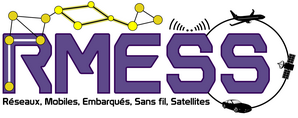Leader: Rejane DALCE
A powerfull network of connected objects necessarily requires an efficient Data Link layer that is adapted to the characteristics of the underlying immaterial mediums (limited range, high BER, high connectivity variability, complex detection of collision, existence of several channels, more or less important links radio…), and secondly the needs of applications that use this means of communication (guaranteed speed, reduced latency, long life of autonomous nodes and mobile, …). Our experience of more than twenty years in the low layers (1-2-3) of wireless networks has naturally led us to contribute in recent years to the design of new layer #2 protocols responding to many locks related to networks of wireless sensors, for various applications in the fields of monitoring industrial plants, and connected objects for the assistance and assistance. In particular, we have designed MAC layers that meet the two antinomic criteria of low energy consumption and compliance with high time constraints. Combined with these powerful mono or multi-channel access methods, we have also proposed protocols for the localozation of autonomous wireless mobile nodes that can work in indoor environments. The common denominator of our contributions is the adequacy of these protocols to immaterial layers on which we do not contribute directly, but that we apprehend the best possible in a step where the cross-layering 1-2 is advantageously used. We focus on designing Layer #2 least power consuming protocols, thus maximizing the sleep periods of autonomous nodes, which leads us to develop meeting solutions based on strong MAC synchronization of communicating entities. In terms of performance evaluation, there is a lot of room for real prototyping and pragmatic evaluation of protocols through the use of testbeds. The team has been involved in the development of several rapid protocol prototyping tools for wireless sensor networks and is now very more focused on developing the OpenWiNo tool for protocol implementation, then emulation and testing of nodes in controlled and real environments. Work is also carried out on the design of hybrid network architectures of connected objects integrating links and various technologies (satellite, WPAN, WLAN, WMAN, WWAN …).
